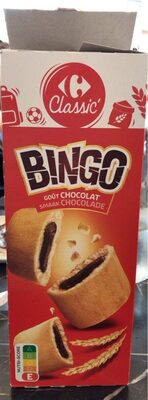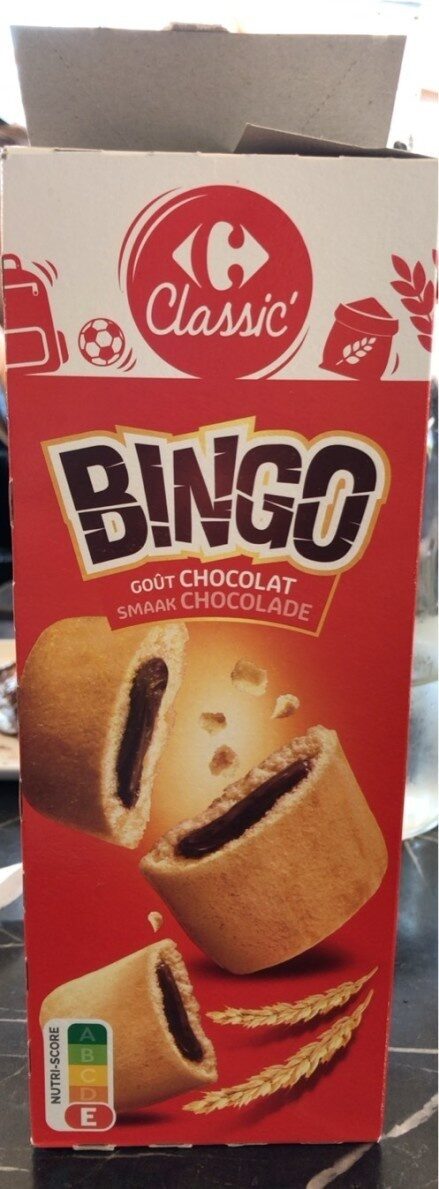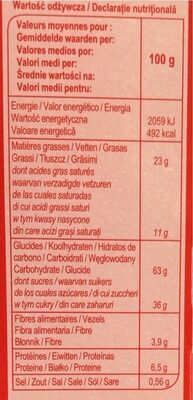Bingo goût chocolat - Carrefour - 225 g
Aquesta pàgina del producte no està completa. Podeu ajudar a completar-la editant-la i afegint-hi més dades a partir de les fotos ja disponibles, o fent-ne més amb l'aplicació de androide o iPhone / iPad. Gràcies!
×
Algunes de les dades d’aquest producte les ha proporcionat directament el fabricant Carrefour.
Codi de barres: 3270190178866 (EAN / EAN-13)
Nom comú: Biscuits fourrage (40%) au chocolat.
Quantitat: 225 g
Marques: Carrefour
Categories: Snacks, Aperitius dolços, Galetes i pastissos, Galetes, Galetes de xocolata, en:Filled biscuits, en:Milk chocolate biscuits, fr:Biscuits aux oeufs
Etiquetes, certificacions, premis: Etiquetes de distribuïdors, Fet a França, fr:Testé par le panel test Carrefour
Productor: Fabriqué en France par EMB 50025 (2) ou EMB 44187B (3) pour Interdis. Le dernier chiffre figurant après la date de durabilité minimale identifie le site de fabrication.
Llocs de fabricació o processament: Avranches, Manche, Basse-Normandie, France
Codi de traçabilitat: EMB 50025 - Avranches (Manche, France), EMB 44187B - Saint-Père-en-Retz (Loire-Atlantique, France)
Botigues: Carrefour Express, Carrefour, carrefour.fr
Països on es va vendre: França, Itàlia, Polònia, Romania, Espanya
Matching with your preferences
Altres dades
Altres dades: Goûters Dorés X12
Condicions de conservació: À conserver à l'abri de la chaleur et de l'humidité. Pour une dégustation optimale, à consommer de préférence avant le : voir sur le dessus du paquet.
Servei al client: Interdis - TSA 91431 - 91343 MASSY Cedex - France.
Report a problem
Fonts de dades
Producte afegit per fred-chauviere
Última modificació de la pàgina del producte per kiliweb.
La pàgina del producte, també editada per aristoi, autorotate-bot, carrefour, chevalstar, driveoff, ecoscore-impact-estimator, fpdsurveys, hungergames, jacob80, manu1400, morganesh, openfoodfacts-contributors, org-carrefour, packbot, quechoisir, roboto-app, teolemon, thaialagata, yuka.WmJBOUQ2OFFxZkFGZ3NRajFEcnE2TzVIemNhRlFrYVZPL0VmSWc9PQ.












